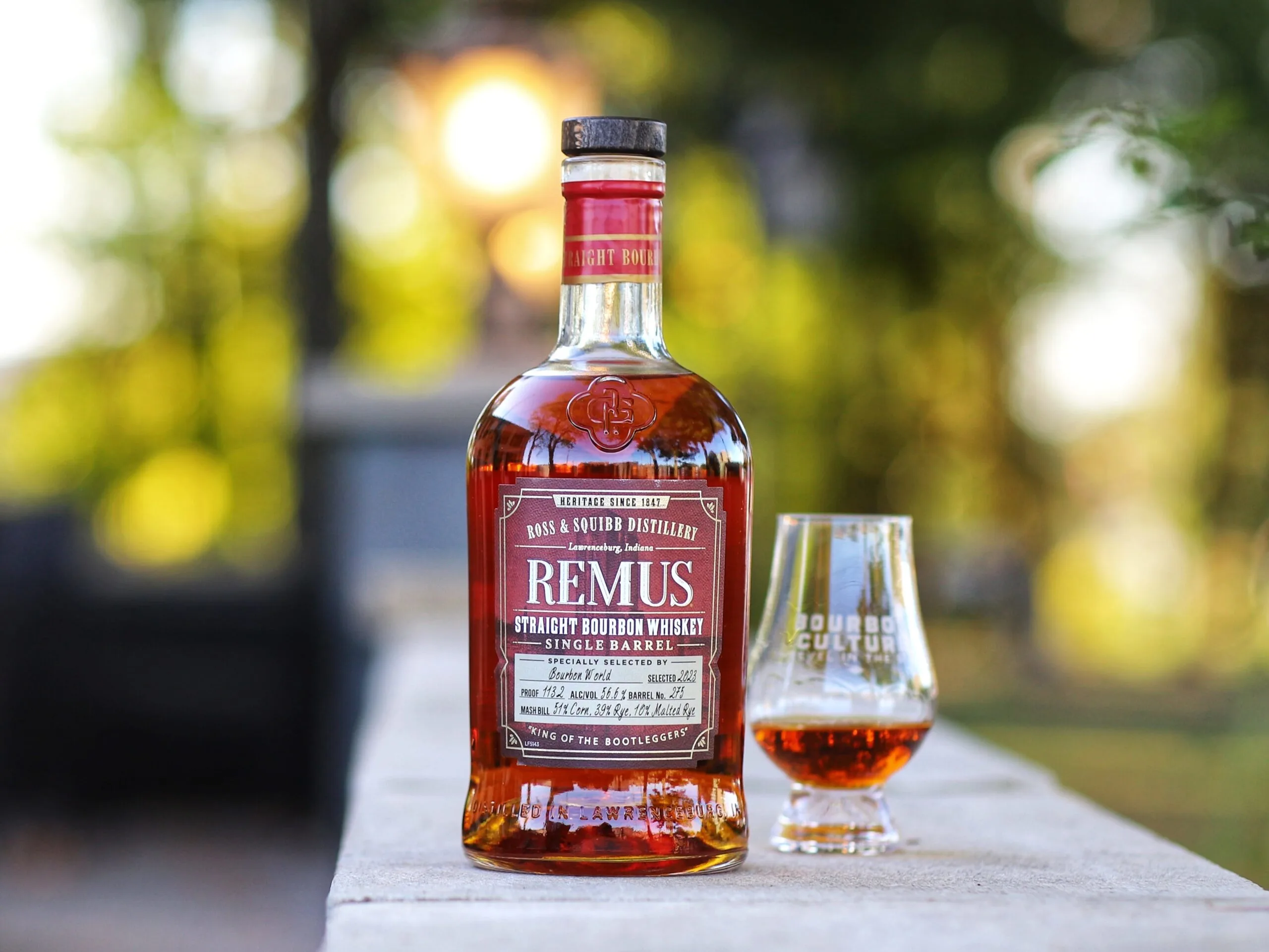| Don't like ads? | No ads |
*Bourbon Culture is reader-supported. When you buy through links on our site, we may earn an affiliate commission.
Back in 2013, MGP made big news in the bourbon community by announcing they were going to begin distilling six new whiskey recipes. At that point in time, enthusiasts were just starting to wise up on how much rye whiskey and bourbon was being sourced by various non-distiller producers. But MGP had big plans to cover new and emerging categories. This is why the whiskies they revealed – a malt whiskey, wheat whiskey, two new rye whiskies and two new bourbons – were a shock to the budding enthusiast community. Why add whiskies when their three main ones seemed to be selling just fine?
What MGP didn’t say in their press release was that they didn’t plan on stopping at just those six recipes.. By current estimates, they now have around 30 unique recipes that they are producing as of 2023. A lot of those recipes were specifically made for certain customers – which means they do not disclose them publicly. But some do see the light of day – like the one in this bottle of Remus that I’m reviewing today. It’s known by the name “Highest Rye” which I’ll cover the details on in the following section.
MGP’s “Highest Rye” Bourbon
By law, a bourbon’s mash bill must contain at least 51% corn. The other 49% can be whatever a distiller wants. Most of them usually add more corn because it’s cheap and gives bourbon its sweet taste. MGP has traditionally taken the harder (and more expensive) path of using more rye grain in their recipes because they believed it created whiskies that were much more flavorful than their competitors. So they took a look at their high-rye bourbon recipes and asked the question “What if we used even more?” The maximum limit was 49%, so they set their sights on that number to see if it would work.

The only problem was that MGP (as with Seagram’s before it) has a policy that all of their whiskies contain at least 1% malt in the mash bill. This is so it meets the legal definition to be called a “whiskey” in certain overseas markets (European countries, mainly). MGP’s creators determined that requirement didn’t specify what grain needed to be malted though. It was just assumed that whiskeymakers would use malted barley because it is the most commonly malted grain in the world. It just so happened that there was a new malted kid on the block – and other producers were already proving you could distill whiskey just fine with it – malted rye.
What is “malt?”
I’d like to take a minute to explain what exactly “malt/malted” means because I’ve talked to an increasing amount of people who have told me they are unaware of its definition. The act of malting sees the grain soaked in water and then spread out on a surface (usually a specially built floor) in a thin layer where it begins to sprout. Sprouting allows special enzymes to develop. These enzymes used to be necessary to break down the sugars into simple chains that the yeast can later digest and turn into alcohol. Nowadays most distilleries use commercially-made powdered enzymes to do this as a cost-cutting measure so they don’t have to buy the more expensive malted grains.
After the grain has sprouted, a heat source is applied that basically stops the process by “kilning” (similar to baking) it. The length of time a grain is kilned will change its color from pale to “caramel” and finally “chocolate.” So if you have ever seen a whiskey described as “Chocolate Malted ____” then you’ll know that grain was kilned extra long. In Scotland, dried peat from their many bogs is sometimes used as the fuel source to kiln the malted grain. The burning peat gives off smoke that will give Scotch that distinct “peated” (smokey) flavor. By the way, not all Scotch is peated. I think less than 20% of it is, so if you’re holding back on trying more Scotch because you don’t like smoke, I encourage you to try the non-peated varieties. Anyway, the majority of the time natural gas is used to kiln the malted grain because it burns clean and doesn’t affect the flavor or scent.
Remus Highest Malt Single Barrel Bourbon
It’s hard to tell what came first; grain suppliers pushing new kinds of grain onto producers or producers asking for new kinds of grain to use. Whatever it was, MGP joined in the frenzy of other producers who started using malted rye back around 2016-2018. This new recipe that I talked about earlier would ditch malted barley entirely for malted rye. The mash bill they came up with used 51% corn, 39% un-malted rye and 10% malted rye. Smoke Wagon is scheduled to use this bourbon in a new 2024 release where they label it as 51% corn, 49% rye, but it’s the same thing.

However you word it, it’s effectively created a bourbon with the “highest rye” content you can legally have. If you didn’t know by now, MGP and Four Roses use the same recipe designators. Four Roses starts theirs with the letter “O” (OBSV for example) whereas MGP’s starts with the letter “L” (their version would be called LBSV). Internally, MGP calls their new 51/39/10 recipe “LISV” where the “I” designates the grain bill and the “V” designates the yeast that was used.
After about six years of aging, MGP decided that this new recipe was maturing well enough to not only create the label “Remus Highest Rye Bourbon,” but to also sell it as single barrel picks to retailers. The differences between the two is that the batched version of Remus Highest Rye wears a gray label while the single barrel version wears a distinct red label and neckfoil. The proof for the single barrels varies from barrel to barrel because they are bottled at barrel proof. The bottle I’m reviewing today was selected by Big Red Liquors in Indiana under their “Bourbon World” single barrel pick designation. It came in at 113.2 proof (reminder: barrel entry proof was 120) and is around six years old.
So how does it taste? It’s rare that MGP does anything half-assed, so I’m assuming it’s good, but I haven’t been the biggest fan of malted rye in the past. So join me as I pour a glass. I sampled this neat in a glencairn.
Tasting Notes
Nose: The interesting thing about the nose is that the scents I am finding are almost completely bereft of traditional rye scents – unless you count the baking spices like cinnamon and allspice. Instead, the nose leans heavily towards scents I normally associate with higher-corn ratio mash bills. Sweet scents of corn cakes, molasses, and vanilla are pleasant, but not exactly what I was thinking I’d find.
Palate: Puzzled by the nose‘s lack of some rye traits, I’m finally picking them up on the palate. I can taste mint, licorice and lemon zest. Its spicy character tickles my tongue with cinnamon stick and chili oil. The heat from the proof gradually sneaks up on me. But don’t think this is all heat and no flavor. There are plenty to appreciate here like caramel fudge, table syrup, cornbread and honey. Some stone fruit notes like apricots can be found too. The oak is lighter than I expected, but the mouthfeel is still thick and robust. A dainty bourbon, this ain’t.
Finish: The finish exposes more oak than I’ve found on the nose or palate so far. That’s great in my book. After the sip is complete, the hot spices begins to transform into baking spices and mint. The finish isn’t as complex as I thought it would be, but it is an enjoyable experience, nonetheless.
Score: 7.7/10
I was bracing myself for a bourbon that was going to taste like one of those “barely legal” rye whiskies from Kentucky. It turned out that wasn’t the case. Despite the highest amount of rye being used in this recipe, I found it closer in taste to the other “high rye” bourbon in MGP’s arsenal – the 60/36/4 recipe that is famously found in Smoke Wagon and most Smooth Ambler bourbons. There are some differences between the two – namely the surprising amount of “corn” notes on the nose and palate. I figured the heavy amount of rye would have covered those up completely, but no. The odd thing was that the corn notes weren’t particularly grainy either (which would indicate the bourbon was underdeveloped), they were just another flavor in the spectrum.

The V yeast strain usually turns the spicy rye grain into a more fruity experience. That’s something it’s famous for. But as I was sipping through this bottle, I found less fruit notes than I was expecting. Did that have something to do with the malted rye component? I can’t say for sure. But if you tend to find a lot of fruit in your MGP bourbon, you will probably notice a decrease with this recipe.
Final Thoughts
I am a little bit torn on how I feel about this bourbon. On one hand, I love the fact that MGP has branched out with so many new mash bills. Innovation and experimentation keep a brand fresh and relevant in my eyes. But if I was staring down a single barrel of this Remus bottle on the shelf next to a 6-year-old store pick of Smooth Ambler Old Scout, would I choose the Remus? I’m not sure that I would. I happen to love the standard high-rye mash bill and this new recipe doesn’t move the needle in that enough to choose it over my old standby. That’s not saying it’s bad (my half-full bottle is proof of that), but maybe I’m just stuck in my ways and prefer the familiar to the new. Huh. That’s weird, after I typed that I felt the sudden urge to go yell at the neighborhood kids to get off of my lawn. What’s happening to me?
If you know your preferences as it pertains to MGP’s bourbon, then I’m not telling you that you have to rush out and try this bottle. But if you like to try new releases, you’ll find it to be a very enjoyable and competent bourbon whose malted rye component gains it a few new flavors. Does it do enough to separate itself from MGP’s other bourbon mash bills? Not for me. But I will give it this compliment: Remus Highest Rye is probably one of the best versions of a bourbon that uses malted rye right now.
Featured Products
- Neat Traveler

- View Larger
- Description:The Aged & Ore Neat Traveler is a complete travel kit for spirits. We combined our widely praised Neat Glass with one of our 3oz Flight Bottles and housed them together in a custom EVA travel case. Perfect for a night away with your favorite pour. The tie
- Bottle Flight

- View Larger
- Description:The Aged & Ore Bottle Flight is a premium set of 4 custom silicone wrapped glass bottles designed to transport and share samples of your favorite spirits. The flight bottles come in a custom EVA travel case that fits perfectly in any small bag. An Aged &
- Travel Bundle

- View Larger
- Description:This Bundle combines two of our crowd favorite products, creating the ultimate travel bundle to bring along your favorite spirits and glassware. Bundle Includes: Neat Traveler (Gray) Bottle Flight (Gray) Note: This bundle is only available in gray and col
*Bourbon Culture is reader-supported. When you buy through links on our site, we may earn an affiliate commission.


Tim
Tuesday 12th of December 2023
Good review. I'm waiting for this to hit in my area. But something is off. 51/31/10 adds up to 92. What's the remaining 8% in the mashbill?
Mike & Mike
Tuesday 12th of December 2023
Haha, oops, that was a typo. 31% should have been "39%"